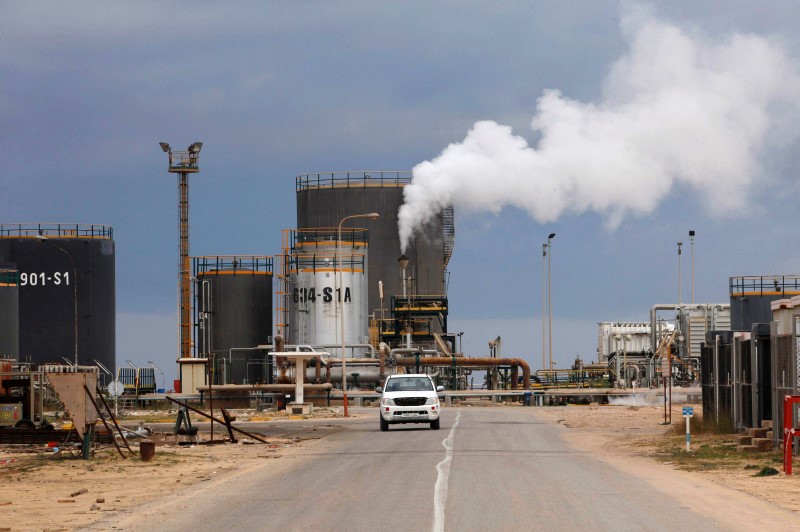* IEA cuts 2018 oil demand growth outlook to 1.3 million bpd
* IEA says non-OPEC will add 1.4 million bpd of production in 2018
* Demand slowdown, rising U.S. output puts pressure on OPEC cuts
* Long-term demand outlook also uncertain -analysts (Adds comment, API data; updates prices)
By Henning Gloystein
SINGAPORE, Nov 15 (Reuters) - Oil prices fell over 1 percent on Wednesday, continuing Tuesday's slide after the International Energy Agency cast doubts over the past few months' narrative of tightening fuel markets.
Brent crude futures LCOc1 were at $61.44 per barrel at 0413 GMT, down 77 cents, or 1.24 percent from their last close.
U.S. West Texas Intermediate (WTI) crude CLc1 was at $55.10 per barrel, down 60 cents, or 1.1 percent.
The price falls mean that crude prices are now down by around 5 percent since hitting 2015 highs last week, ending a 40-percent rally between June and early November.
"Crude prices dropped dramatically after the IEA forecast a gloomy outlook for the near future ... The drop was arguably exacerbated by a global selloff in other commodities," said Sukrit Vijayakar, director of energy consultancy Trifecta. International Energy Agency (IEA) on Tuesday cut its oil demand growth forecast by 100,000 barrels per day (bpd) for this year and next, to an estimated 1.5 million bpd in 2017 and 1.3 million bpd in 2018.
"The oil market faces a difficult challenge in 1Q18 with supply expected to exceed demand by 600,000 bpd followed by another, smaller, surplus of 200,000 bpd in 2Q18," the agency said. demand slowdown could mean world oil consumption may not, as many expect, breach 100 million bpd next year, while supplies are likely to exceed that level.
The IEA report countered the Organization of the Petroleum Exporting Countries, which just a day earlier said 2018 would see a strong rise in oil demand. said a reported increase in U.S. crude inventories was also weighing on prices.
The American Petroleum Institute (API) said on Tuesday that U.S. crude inventories rose by 6.5 million barrels in the week to Nov. 10 to 461.8 million. government inventory data is due later on Wednesday.
On the supply side, rising U.S. output also pressured prices.
U.S. oil production C-OUT-T-EIA has already increased by more than 14 percent since mid-2016 to 9.62 million bpd and is expected to grow further. The latest government data will be issued on Wednesday. IEA said non-OPEC production will add 1.4 million bpd of additional production in 2018.
The IEA's outlook pressures OPEC to keep restraining output in order to defend crude prices, which its members rely on for revenue.
OPEC and some non-OPEC producers including Russia have been withholding production this year to end years of oversupply. deal expires in March 2018 but OPEC will meet on Nov. 30 to discuss policy, and it is expected to agree an extension of the cuts. GRAPHIC: Global crude oil supply and demand balance
http://reut.rs/2zCLx75
^^^^^^^^^^^^^^^^^^^^^^^^^^^^^^^^^^^^^^^^^^^^^^^^^^^^^^^^^^^>
